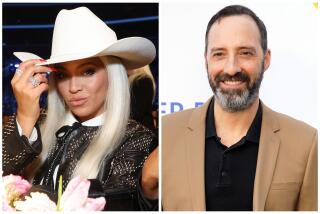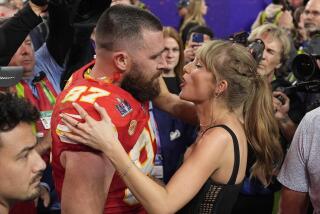Column: A reminder (again) that there’s been only one great Super Bowl commercial
The Super Bowl, and more specifically Super Bowl advertising, is one of our great opportunities for meta-analysis.
Every year at this time we’ll see previews of Super Bowl television commercials, and in the days after the game reviews of the commercials, analyses of the commercials, and analyses of the analyses of the commercials. For advertisers and the National Football League, this is a whirling circle of delightfully lucrative and persistent publicity.
As we’ve done every year for some time, we must once again issue a reminder that there has been only one truly great Super Bowl commercial in the last 40 years or so that this game has been a dominant cultural touchstone. It was a once-in-a-lifetime event, unique in advertising annals in terms of its artistic ambitions and execution, and the winner and still champ. It aired once, in 1984.
Yes, it’s Apple’s “1984” ad introducing the Macintosh.
As we’ve written before, notably on its 30th anniversary in 2014, the “1984” ad aired on national television in its full 60-second form only once, during Super Bowl XVIII on Jan. 22, 1984. It became a legend almost immediately. More important, the ad established Super Bowl TV commercials as a thing, garnering almost as much PR attention as the game itself.
Directed by Ridley Scott, who already had made “Alien” and “Blade Runner,” the ad has set a mark that advertising agencies and advertisers have been trying to hit for 34 years (and failing). They have given us funny animals, tugs on our heartstrings, sexiness, animation, even do-it-yourselfies. But just as there are countless dams compared to Hoover Dam and countless waterfalls compared to Niagara and countless canyons compared to the Grand, there remain only one Hoover Dam, one Niagara, and one Grand Canyon.
And one Super Bowl ad.
The ad itself scarcely needs recapitulating, since it’s still a cultural icon. It begins with gray-garbed drones marching in step to a Big Brother’s Stalinist harangue broadcast from an Imax-sized telescreen, intercut with shots of a tank-topped blond running with a sledge hammer and chased by storm troopers. She halts and shatters the screen with a fling of the sledge hammer, unleashing a blast of fresh air at the army of drones. Just before fade-out comes the pitch: “On January 24th, Apple Computer will introduce Macintosh. And you’ll see why 1984 won’t be like ‘1984.’”
A history of the ad by veteran Apple historian Owen Linzmeyer can be found here. The role of the rebellious blond went to a British discus thrower named Anya Major because she could spin around to launch her liberating sledge hammer at the video image of Big Brother without getting dizzy.
Prior to its airing, the commercial was championed by Steve Jobs, dismissed by Apple CEO John Sculley (who had been imported from PepsiCo to serve as adult supervision for the youthful company), and abominated by the board of directors. Despite the board’s opposition, Apple’s marketing executives made the final decision to keep their one-minute buy for the Super Bowl telecast, which turned out to be a festival of home-computing commercials: Apple’s airtime was shoehorned among ads for PCs from Radio Shack (pitchman: Bill Bixby), Atari (Alan Alda) and IBM (Charlie Chaplin).
As we observed in 2014, and 2016, and 2017, the IBM PC and its clones — rivals to Apple’s Macintosh — soon came to dominate the home and office computer market, but Apple’s “1984” commercial still reigns as a marketing milestone. Three decades from now, ad agencies will still be trying to outdo it, and failing.
To read this article in Spanish, click here
Keep up to date with Michael Hiltzik. Follow @hiltzikm on Twitter, see his Facebook page, or email michael.hiltzik@latimes.com.
Return to Michael Hiltzik’s blog.







